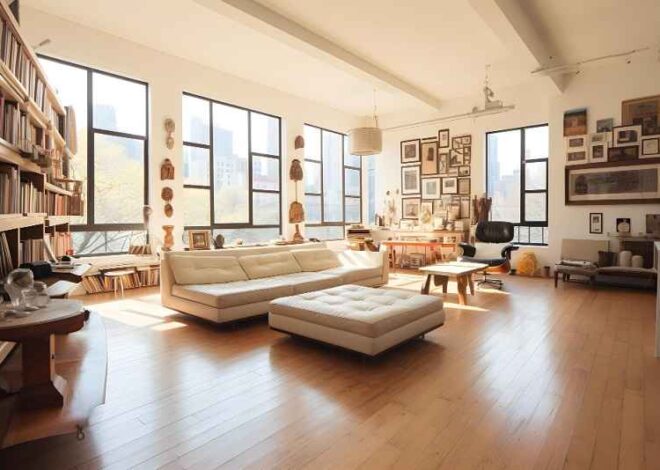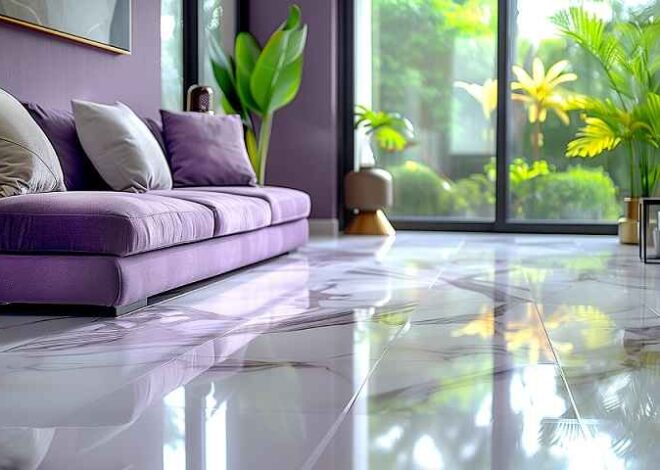
Mix and Match: How to Combine Different Tiles for a Stunning Floor Design
Are you tired of the same old floors in your home? Ready to shake things up with a design that speaks volumes about your style? Welcome to the exciting world of tile combinations! Gone are the days when uniformity ruled the roost. Today, we’re embracing creativity and individuality by mixing and matching tiles like never before. Whether you’re drawn to bold patterns or subtle textures, combining different tiles can transform any space into an eye-catching masterpiece. Join us as we explore innovative techniques, inspiring ideas, and expert tips on how to curate a stunning floor design that reflects your personality while adding warmth and charm to every room. Get ready to unleash your inner designer—let’s dive into the art of tile pairing!
Introduction to tile flooring and its popularity
Tile flooring has become a go-to choice for homeowners and designers alike, transforming spaces with style and versatility. From sleek modern kitchens to rustic bathrooms, tiles offer endless possibilities for creating stunning floors that reflect personal taste. With an array of materials, colors, and patterns available today, the art of mixing and matching tiles is not just practical—it’s a creative endeavor that can redefine any room. Whether you’re aiming for a bold statement or subtle elegance, incorporating different types of tiles into your flooring design opens up a world of captivating tile flooring ideas. Let’s explore how you can elevate your space by combining various tiles in unique ways!
Benefits of using different types of tiles for flooring
Using different types of tiles for flooring opens up a world of creative possibilities. Each type brings its own character and can transform an ordinary space into something extraordinary.
Durability is one major advantage. Porcelain, ceramic, and natural stone tiles are resilient against scratches and stains, making them ideal for high-traffic areas.
Variety in materials means you can achieve any look—from rustic charm to sleek modernity. Textured tiles add depth while glossy options reflect light beautifully.
Combining various tile styles also allows for effective zoning within open spaces. You can delineate areas like kitchens or living rooms effortlessly.
Furthermore, mixing textures enhances tactile experiences underfoot, creating an inviting atmosphere that’s both visually appealing and functional. The interplay between matte and shiny surfaces adds intrigue to your design scheme without overwhelming the senses.
Understanding color schemes and patterns for a cohesive design
Color schemes set the mood in any space. When working with tile flooring, they can enhance your design’s overall look. Consider a palette that resonates with your style and complements existing decor.
Patterns play a crucial role too. Whether you prefer bold geometric shapes or subtle textures, mixing various patterns can create visual interest without overwhelming the eye. Striking the right balance is essential to achieve harmony.
Neutral tones offer versatility and allow for creative freedom with accent colors. On the other hand, vibrant hues can serve as focal points but require careful pairing to avoid clashing.
Take time to visualize how different tiles will interact in your space. Experimenting with sample pieces before committing can help ensure that your chosen color scheme feels cohesive and inviting throughout the area.
Tips for mixing and matching different types of tiles
Mixing and matching tiles can be a fun journey. Start by choosing a unifying element, like color or texture. This will help your design feel cohesive.
Consider scale when selecting different tiles. Pair larger tiles with smaller ones for visual interest but maintain balance throughout the space.
Don’t shy away from contrasts. Combining matte and glossy finishes can create depth in your flooring design, drawing attention to specific areas of your room.
Use patterns wisely; they should complement rather than compete with one another. For instance, geometric shapes look fantastic next to organic designs if placed thoughtfully.
Lastly, always test layouts before committing to installation. Lay out the tiles on-site to see how they interact under natural light and in various angles. This trial run can reveal unexpected results you may love!
Creative ideas for combining different tile shapes and sizes
Mixing tile shapes and sizes can create a dynamic look that elevates any space. Consider pairing large rectangular tiles with smaller square ones to add depth and interest. This contrast draws the eye and breaks monotony.
Another idea is to use hexagonal tiles as accents within a field of larger squares. The geometric play invites curiosity while remaining sophisticated.
You can also create borders or patterns using differently sized tiles for visual framing around specific areas, like entryways or kitchen islands. This technique adds definition without overwhelming the room.
Don’t shy away from combining textured tiles with smooth ones; this juxtaposition enhances tactile experiences underfoot, making your flooring not only visually appealing but interesting to walk on too.
How to incorporate mosaic and patterned tiles into your design
Mosaic and patterned tiles can transform any space with their vibrant designs. Start by selecting a focal point in your room, like a feature wall or an entryway. These areas are perfect for showcasing intricate patterns.
Consider the color palette of surrounding elements when choosing your mosaic tiles. Bold colors can make a statement, while softer hues create harmony. Mixing different tile sizes and shapes adds depth to the design.
Layering mosaics with solid-colored tiles is another effective technique. This approach highlights the beauty of both styles without overwhelming the eye. You might opt for small mosaic accents around larger field tiles for contrast.
Don’t shy away from geometric patterns either; they add modern flair and structure to spaces like kitchens or bathrooms. Play with orientation too—laying some tiles diagonally can introduce movement into your floor design, making it feel dynamic yet inviting.
Case studies: showcasing successful mix and match tile designs
One of the most captivating examples of mixed tile design comes from a cozy kitchen renovation. Here, a homeowner combined sleek subway tiles with rustic terracotta for an eye-catching backsplash. The contrast between the modern and traditional elements created warmth and sophistication.
Another standout case is a spacious bathroom that features large-format porcelain tiles alongside intricate mosaic accents. This clever mix adds depth to the space while maintaining functionality. The larger tiles make the area feel more expansive, while the mosaics introduce bursts of color.
A living room project showcased textured wood-look tiles paired with geometric ceramic designs. This combination not only highlights different styles but also offers practical benefits—easy cleaning and durability without sacrificing aesthetics.
These successful implementations illustrate how creativity can transform spaces through thoughtful combinations of various tiles, making each environment unique and inviting.
Maintenance tips for mixed tile floors
Mixed tile floors can create a stunning visual impact, but they also require proper care to maintain their beauty. Regular sweeping is essential. Dust and debris can scratch the surface over time.
For deeper cleaning, opt for a pH-neutral cleaner that won’t harm your tiles’ finish. Avoid harsh chemicals that could dull or damage different materials.
Pay attention to grout lines as well. Use a soft brush with mild detergent to keep them looking fresh and clean. Sealing your grout periodically will help protect it from stains and moisture.
If you have patterned or mosaic tiles, consider using coasters under heavy furniture items to prevent scratches or chips.
Finally, place mats in high-traffic areas to minimize wear on both the tiles and the grout. This simple step goes a long way in prolonging the life of your beautiful mixed tile floor design.
Conclusion: the endless possibilities of mixing and matching tiles
The beauty of tile flooring lies in its versatility. Mixing and matching different tiles can transform your space into a vibrant masterpiece, showcasing your unique style. The possibilities are endless when it comes to combining colors, shapes, and textures.
Whether you prefer bold contrasts or subtle harmonies, the right combination can create an inviting atmosphere in any room. With thoughtful planning and creativity, you can achieve stunning results that reflect your personality.
From kitchens to bathrooms to living areas, each space offers opportunities for experimentation with various tile designs. Remember that maintaining these mixed tile floors is easier than it may seem; just follow some basic care tips to keep them looking fresh.
As trends evolve and personal tastes shift, embracing the art of mix-and-match tiles opens doors to endless design possibilities. Your floor can be more than just a surface—it can become a statement piece in your home. Embrace this creative journey and let your imagination guide you as you explore all the exciting tile flooring ideas available today!


